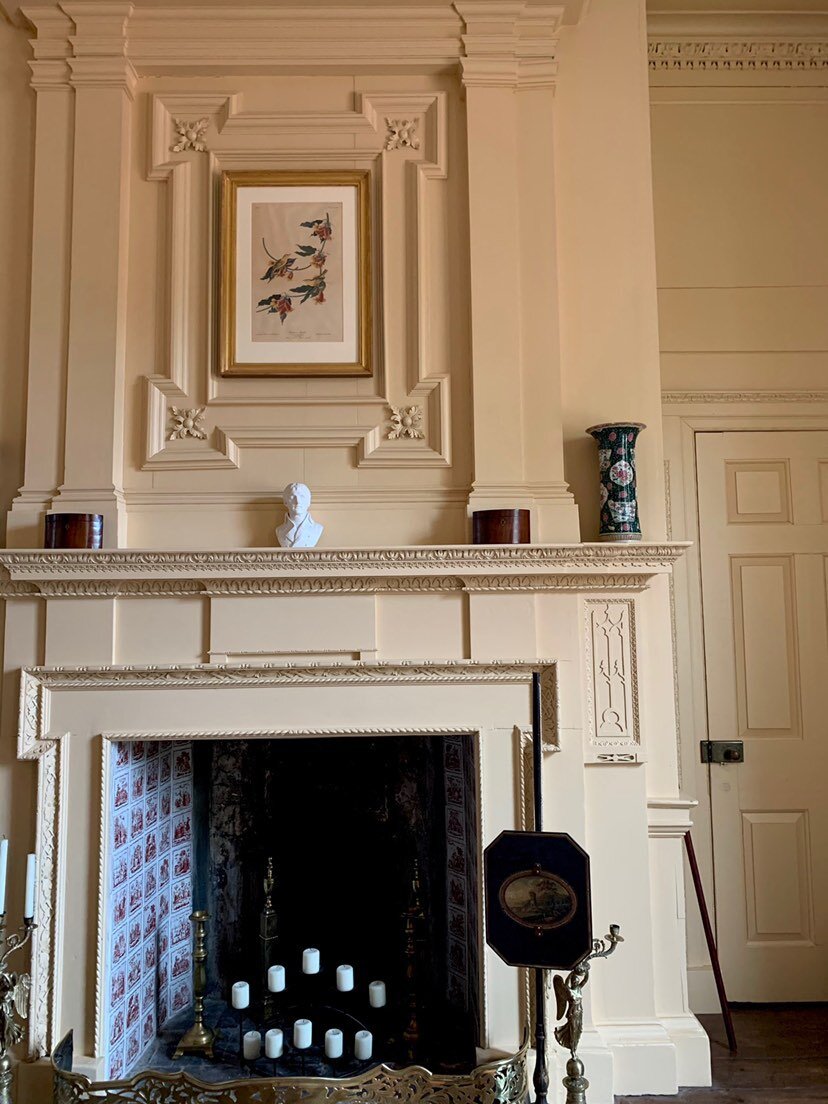It’s a common tradition for guests to bring small gifts to their hosts and hostesses when visiting. Today in America it’s often a bottle of wine, a dessert, flowers - small gestures of appreciation for the hospitality.
When Aaron Burr visited his son-in-law’s family in Charleston, SC, he brought the small bust, left, of Napoleon Bonaparte.
Colonel William Alston (1756-1839) was, like Burr, another member of the Revolutionary generation, serving during the war as an aide-de-camp to Brigadier General Francis Marion in the South Carolina campaigns. Also like Burr, he had been active in state politics, and supported Thomas Jefferson’s Democratic-Republican party. But while Burr’s finances were often over-extended, Alston’s inherited wealth was vast and firmly established. Known as “King Billy”, he was definitely Low Country royalty, possessing seven plantations and hundreds of enslaved workers, as well as an elegant town house in Charlestown.
Joseph Alston (1779-1816) was Alston’s oldest son. After attending the College of New Jersey (later Princeton University), he briefly studied law, but soon turned his interests to his plantations and politics. After a courtship that was largely by letter, he married Burr’s daughter Theodosia in 1801; Joseph was twenty-one, and Theodosia was eighteen. Their only son, Aaron Burr Alston, was born the following year.
While from their surviving letters, it seems likely the young couple married for love, their fathers approved of the match for other reasons. Joseph brought wealth and connections to South Carolina’s elite families, while Theodosia was the child of one of the most savvy politicians from the north. At the time of their marriage, the outcome of the presidential election of 1801 was still unresolved, and it seemed likely that Burr would become the country’s third president.
In the end, Burr had to settle for vice president behind President Thomas Jefferson. Ironically, the election also marked the end of Burr’s political power as Jefferson and his supporters effectively marginalized him from any power within the government. The scandal of Burr’s fatal duel with Alexander Hamilton in 1804 effectively ended his political career. He completed his term as vice president, leaving office in 1805.
But in South Carolina, where Hamilton and his Federalist policies regrading trade and finance had never been popular, Burr still had his supporters, led by the Alstons. Over the next several years, Burr became deeply involved in an ambitious - and highly illegal - plan to raise a private army and carve off part of the southwest territories as an empire which Burr himself will lead. Theodosia and her husband knew of the plot, and likely William Alston did as well.
With all that in mind, this Napoleonic gift from Burr to William Alston seems to take on more significance. By 1804, Napoleon had become the first Emperor of the French, and had begun his conquest of Europe. Was this little bust of Napoleon a symbol of what Burr hoped to achieve, a knowing gift between two friends?
Bold dreams, yes, but with a disastrous ending. In 1807, Burr was arrested, brought back to Virginia under an armed guard, and tried for treason. Although acquitted, he was forced to flee his enemies and creditors for exile and poverty in Europe until 1812. Emperor Napoleon, the leader that Burr had once admired, not only refused to meet with him, but also had him under surveillance as a possible enemy of the state. Burr finally returned to New York in 1812, but during that same year his young grandson died of a fever and his daughter Theodosia was lost at sea. Four years later, Joseph Alston also died. Burr resumed his work as a lawyer and lived another twenty years in relative obscurity in New York City, dying in 1836.
In a way, the little bust of Napoleon had a happier story, albeit with a few chips and nicks from earthquake tumbles. He has remained in the family to the present day, with a prominent place on the mantle, right, in the same withdrawing room that Burr visited two hundred years ago.
Many thanks to Gabriella Angeloni for her assistance with this post.
Photos courtesy of Gabriella Angeloni.
My latest historical novel, The Secret Wife of Aaron Burr, is now available everywhere. Order here.


